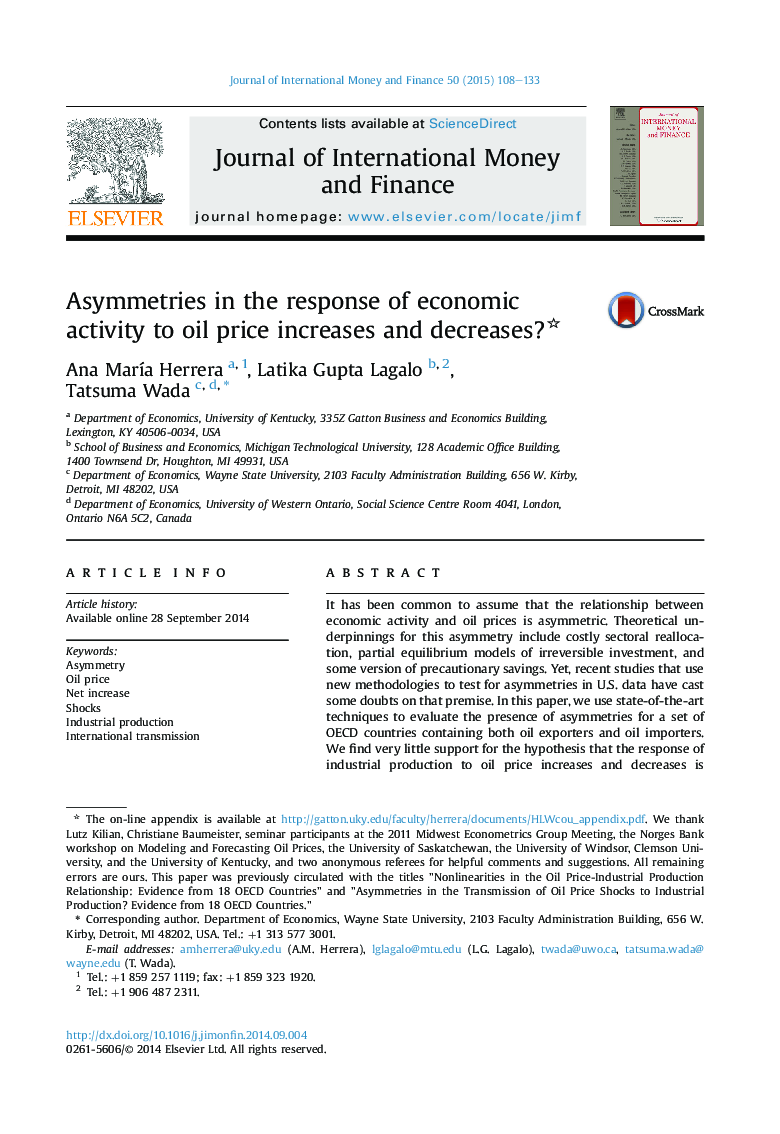| Article ID | Journal | Published Year | Pages | File Type |
|---|---|---|---|---|
| 963396 | Journal of International Money and Finance | 2015 | 26 Pages |
Abstract
It has been common to assume that the relationship between economic activity and oil prices is asymmetric. Theoretical underpinnings for this asymmetry include costly sectoral reallocation, partial equilibrium models of irreversible investment, and some version of precautionary savings. Yet, recent studies that use new methodologies to test for asymmetries in U.S. data have cast some doubts on that premise. In this paper, we use state-of-the-art techniques to evaluate the presence of asymmetries for a set of OECD countries containing both oil exporters and oil importers. We find very little support for the hypothesis that the response of industrial production to oil price increases and decreases is asymmetric. Our results have important implications for theoretical models of the transmission of oil price shocks: they point towards the importance of direct-supply and direct-demand transmission channels, as well as indirect transmission channels that imply a symmetric response.
Related Topics
Social Sciences and Humanities
Economics, Econometrics and Finance
Economics and Econometrics
Authors
Ana MarÃa Herrera, Latika Gupta Lagalo, Tatsuma Wada,
